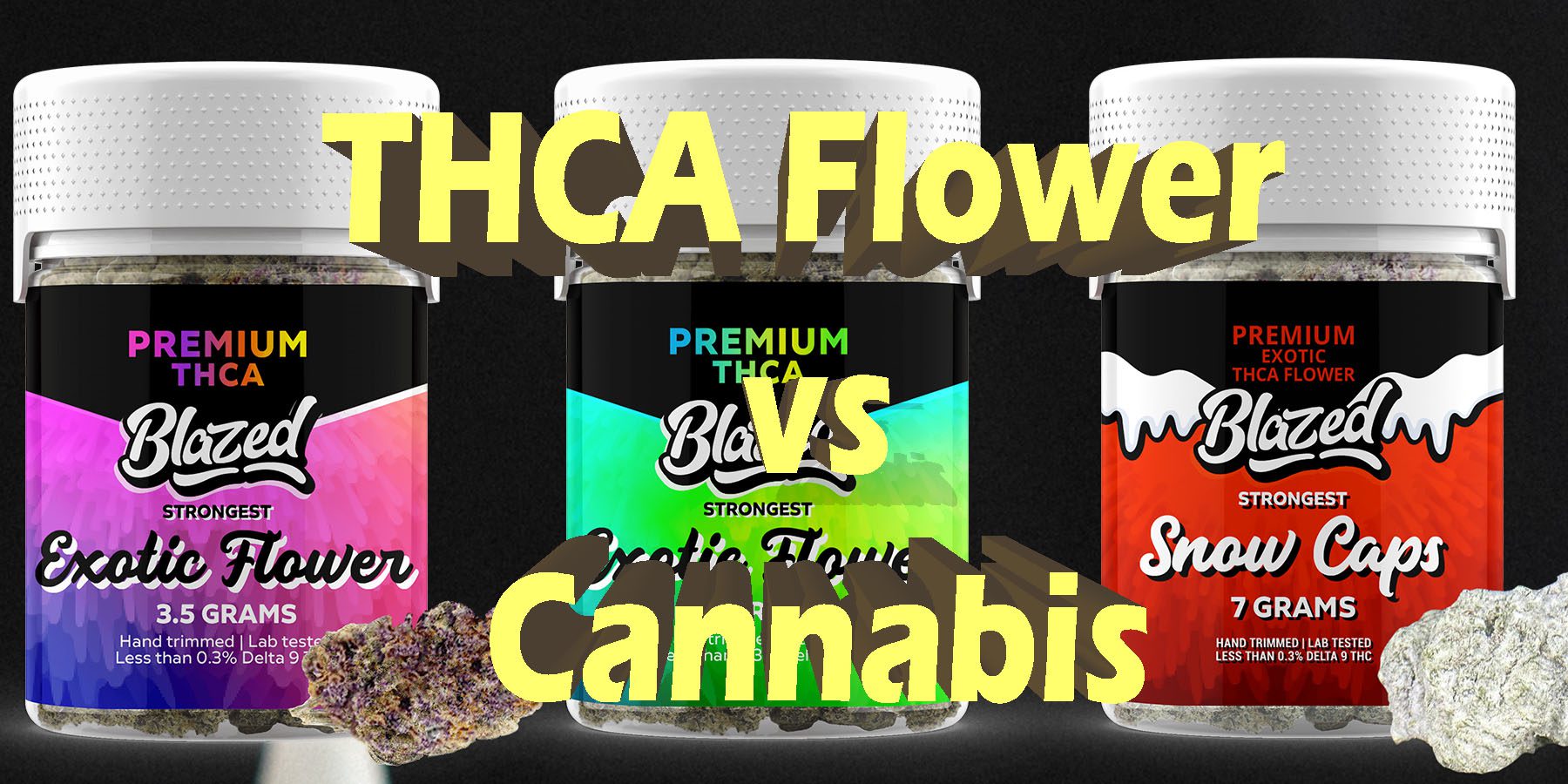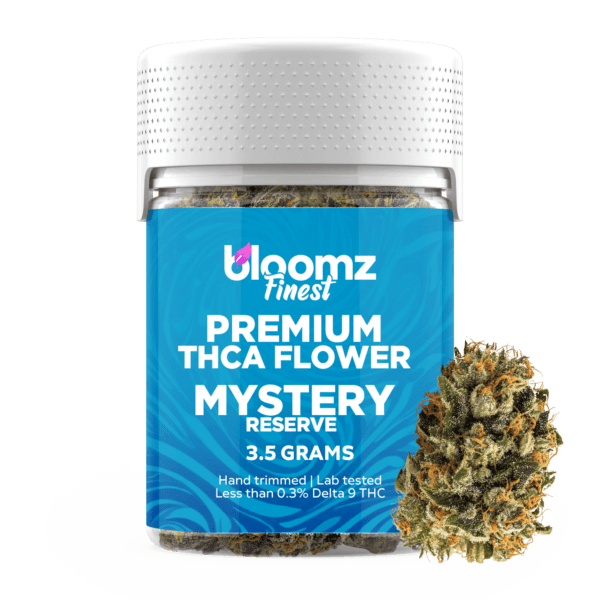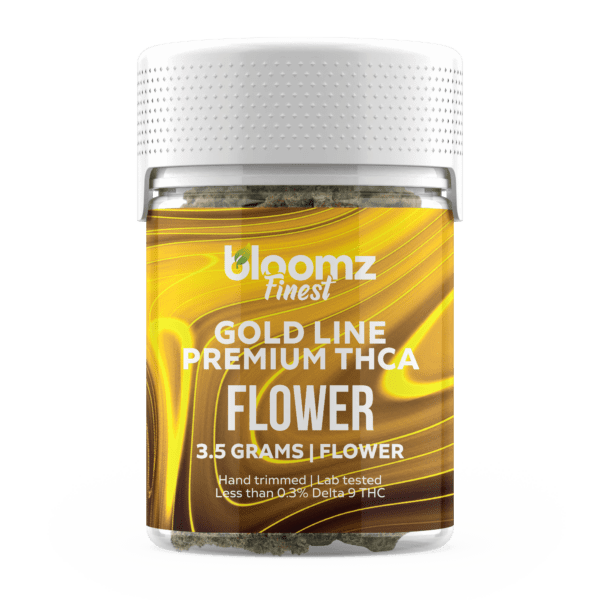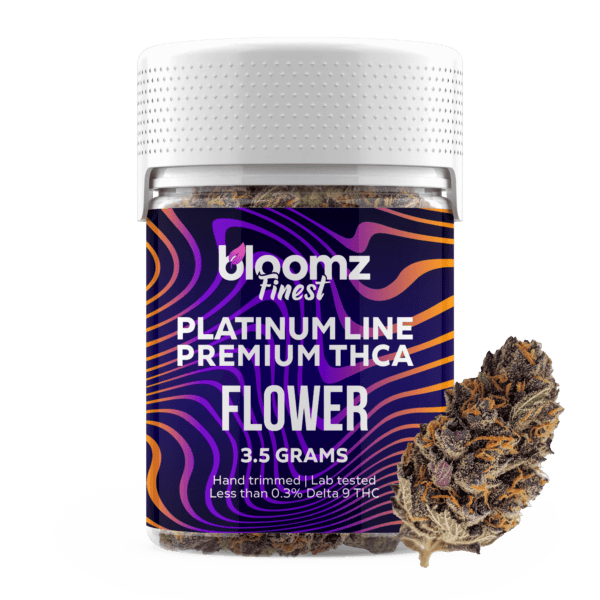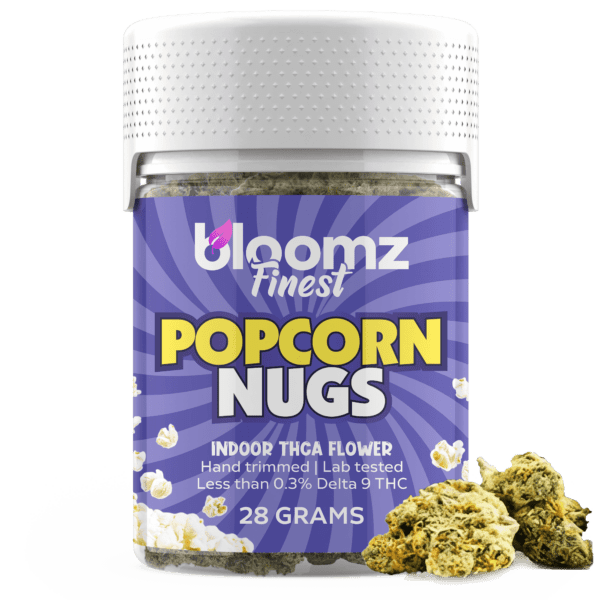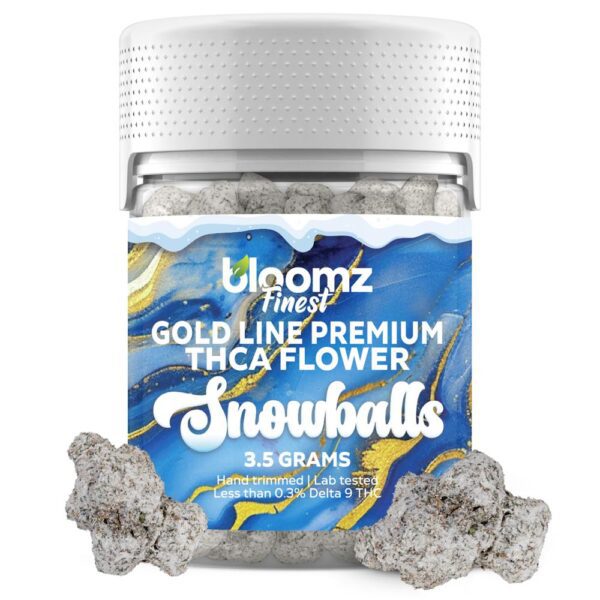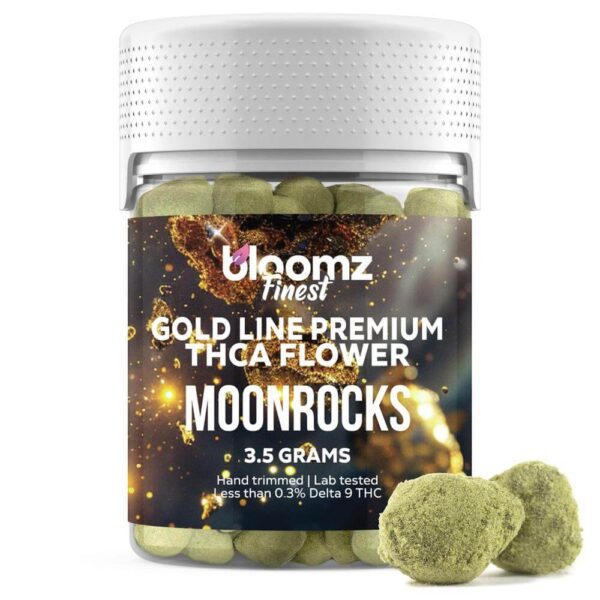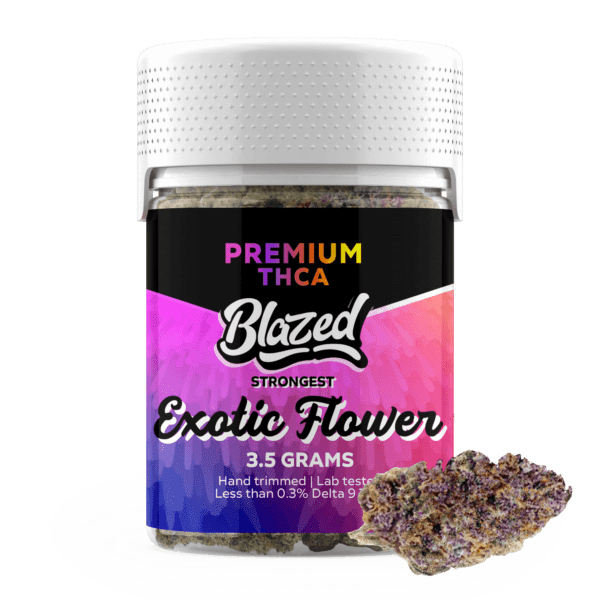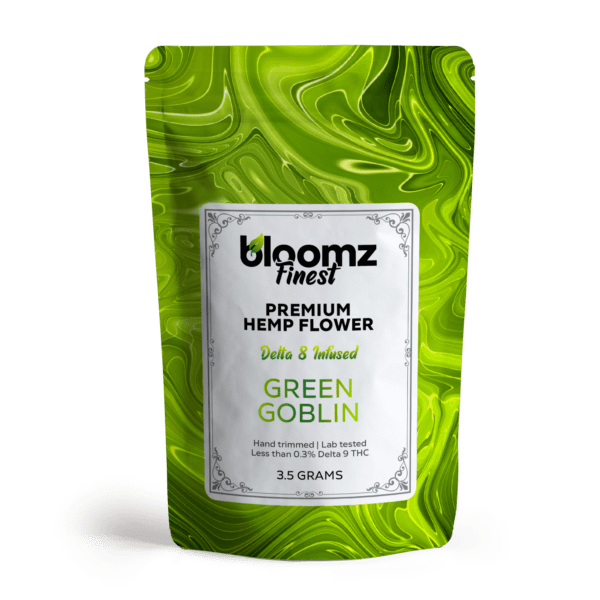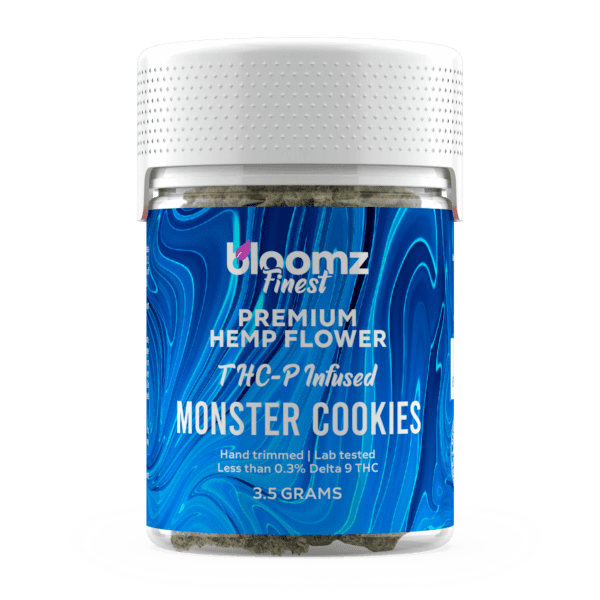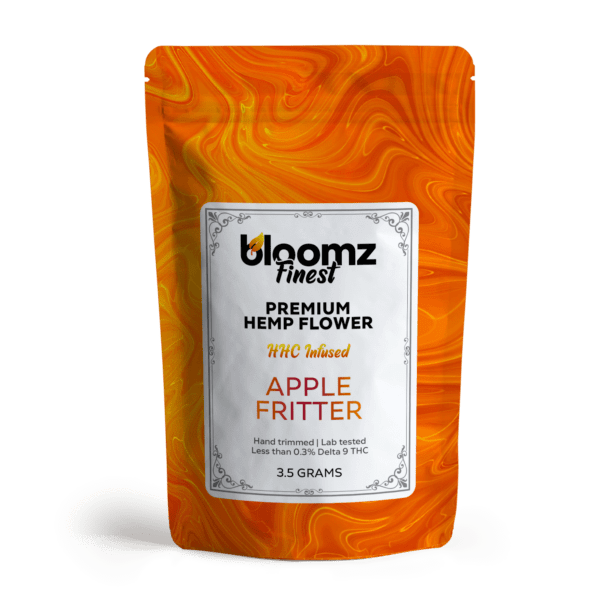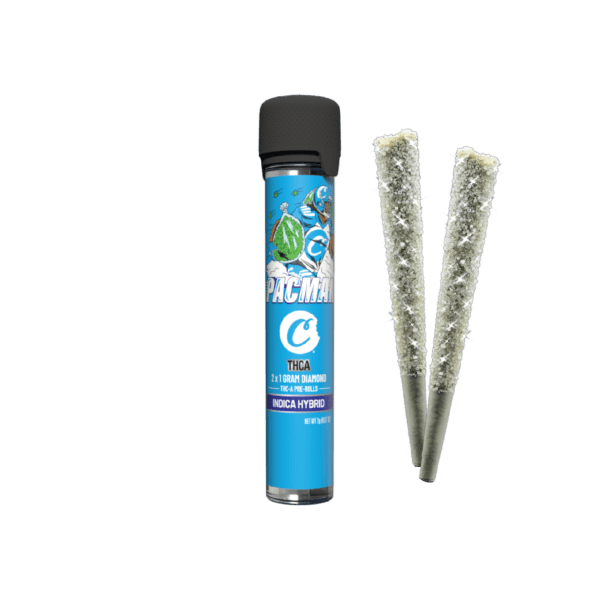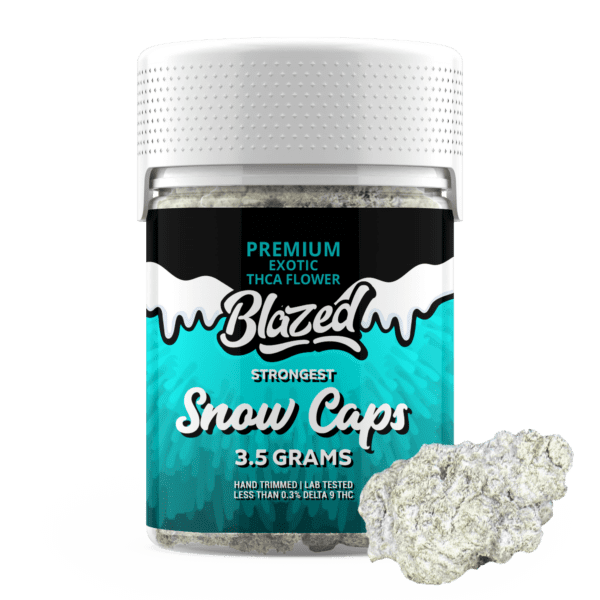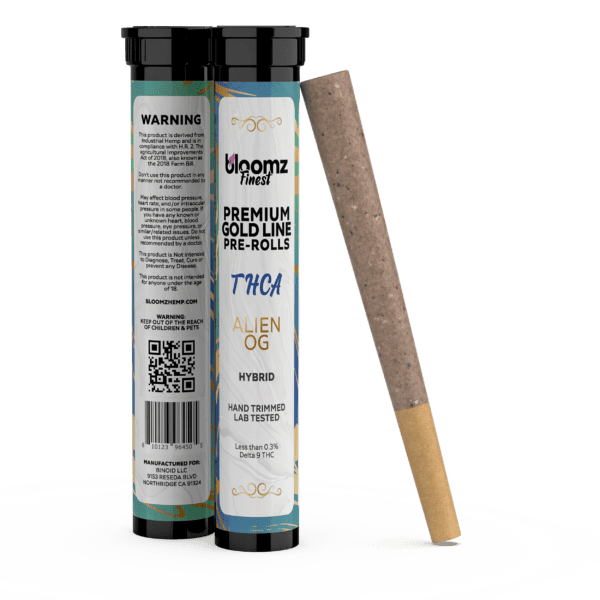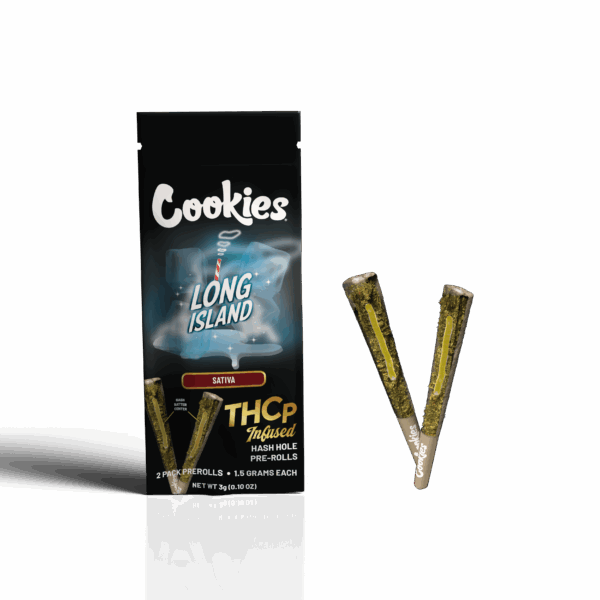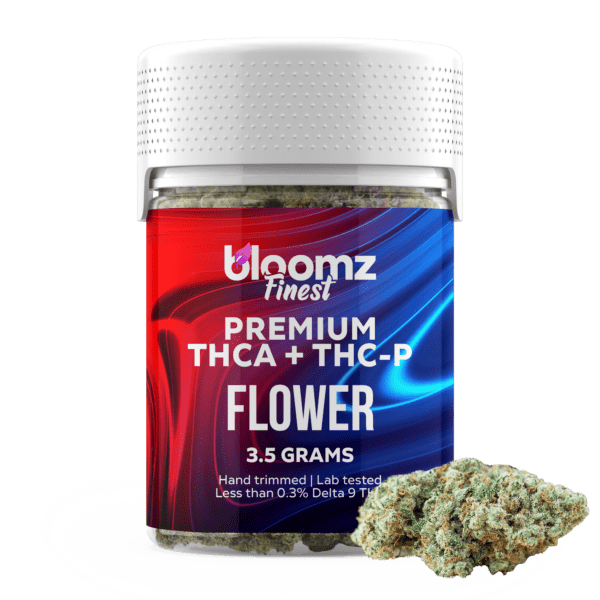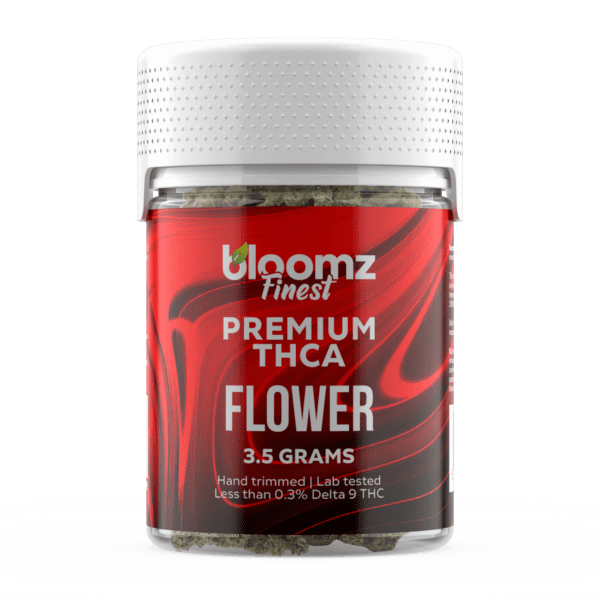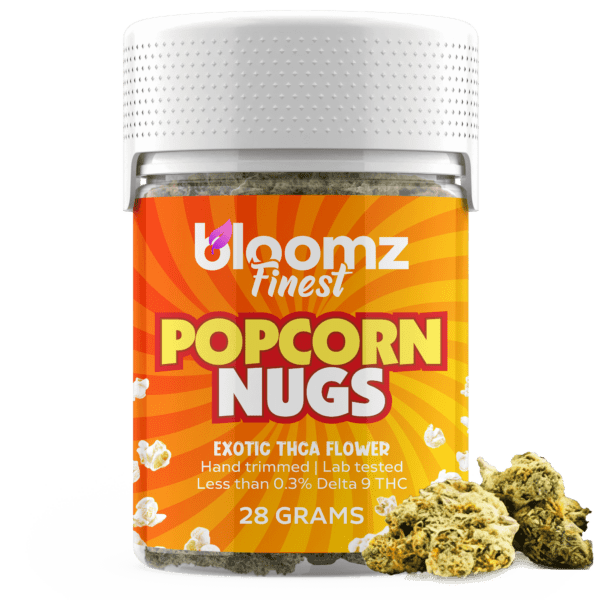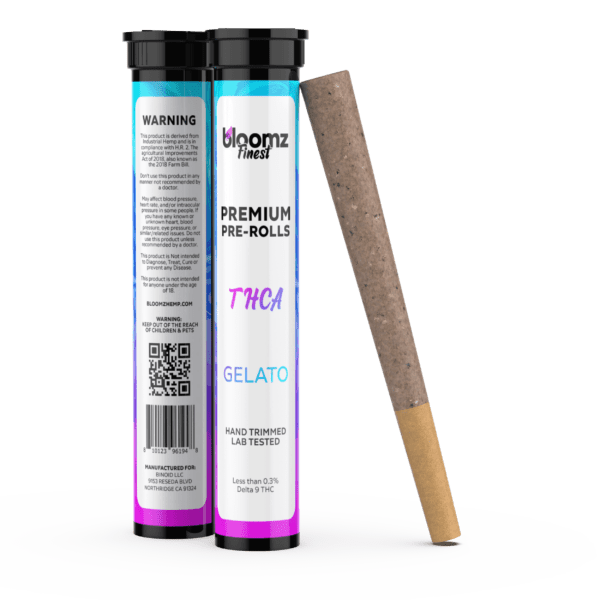In the ever-vibrant and rapidly expanding world of botanical wonders, a fascinating dialogue has emerged, pitting a newcomer against the established titan. The landscape of legally accessible hemp and cannabis products has become a complex tapestry, woven with threads of science, legislation, and consumer curiosity. Navigating this new terrain often feels like learning a new language, one filled with acronyms and chemical distinctions that can be both intriguing and bewildering.
At the center of the current conversation is THCA flower, a product that looks, smells, and feels remarkably familiar, yet operates under a completely different legal paradigm. This has naturally led to a head-to-head comparison with its famous progenitor, traditional cannabis. This matchup isn’t merely about choosing a product; it’s about understanding a pivotal evolution in the market, a shift that redefines accessibility and challenges our conventional understanding of the plant itself.
To Buy THCA Flower Click Here
Recommended products
-
THCA Flower – Mystery Reserve
$41.99$79.99 -
THCA Flower – Indoor Exotics – Gold Line
$37.99$69.99 -
THCA Flower – Platinum Line
$49.99$79.99 -
THCA Smalls
$149.99$256.99
Why It’s Important to Breakdown the Matchup of THCA Flower vs. Cannabis
Delving into the specifics of THCA flower versus traditional cannabis is an essential exercise for any modern consumer aiming to make knowledgeable and empowered decisions. The legal evolution sparked by the 2018 Farm Bill has introduced a wave of innovative products that exist alongside state-regulated cannabis programs, creating a dual market that can be difficult to navigate without a clear understanding of the key distinctions.
Grasping the fundamental differences in their chemical makeup, legal standing, and the pathway they take to the consumer is critical for setting accurate expectations and ensuring a safe, positive experience. A detailed breakdown strips away the marketing jargon and illuminates the science, allowing individuals to choose a product that truly aligns with their circumstances and preferences:
Clarifying the Legal Landscape: The single most important reason to dissect this comparison is the profound difference in the legal frameworks governing each product. THCA flower‘s legality is rooted in federal law—the 2018 Farm Bill—which legalized hemp and its derivatives containing less than 0.3% Delta 9 THC by dry weight. This federal protection allows for online sales and interstate shipping to many parts of the country. Conversely, traditional cannabis, which by definition exceeds this Delta 9 THC limit, remains federally illegal as a Schedule I substance. Its legality is determined by a complex and inconsistent patchwork of individual state laws. Understanding this distinction is not just academic; it’s a practical necessity for consumers to operate within the bounds of the law, avoiding potential legal complications and making purchases with confidence.
Understanding the Science of Activation: The core of the THCA versus cannabis debate lies in a fundamental chemical process: decarboxylation. Tetrahydrocannabinolic acid (THCA) is the non-intoxicating precursor to Delta 9 THC. It requires heat to transform into the intoxicating compound responsible for the classic cannabis “high.” By breaking down this matchup, consumers learn that THCA flower holds immense potential energy, which is unlocked upon smoking, vaping, or cooking. This knowledge empowers users to control the outcome; they can harness the potent, euphoric effects through heat or explore the non-intoxicating properties of the raw cannabinoid. This scientific literacy allows for intentional consumption tailored to a desired experience.
Promoting Consumer Safety and Transparency: The distinction between these two products has significant implications for regulation and quality control. State-legal cannabis markets typically operate under stringent seed-to-sale tracking and mandatory testing protocols. The federally legal hemp market, while robust, can have more varied standards. A thorough breakdown encourages consumers to become their own advocates by demanding and scrutinizing lab reports, known as Certificates of Analysis (COAs). By understanding how to read these reports—specifically looking for cannabinoid potency and screenings for contaminants—customers can verify a product’s legality, quality, and purity, pushing the entire industry toward a higher standard of transparency and accountability.
Aligning the Product with Personal Needs: Ultimately, a clear comparison helps consumers align the right product with their personal needs and circumstances. An individual living in a state where cannabis is prohibited might find that federally legal THCA flower is a perfect and accessible solution. Another person in a legal state might prefer the experience of visiting a dispensary and consulting with a budtender. By laying out the differences in accessibility, product variety, shopping experience, and regulatory oversight, this breakdown provides a roadmap for consumers to navigate their options and make a choice that fits seamlessly into their lifestyle and comfort level.
Contender #1: THCA Flower
Emerging from the intersection of botanical science and legislative nuance, THCA flower has confidently stepped into the spotlight as a formidable contender in the modern market. It greets the senses with all the classic hallmarks of high-quality cannabis: dense, sparkling buds; a rich tapestry of aromas ranging from earthy pine to sweet citrus; and a visually stunning appearance that speaks to careful cultivation. Yet, its identity is built upon a clever chemical distinction that allows it to occupy a unique legal space.
THCA flower isn’t merely an imitation or a lesser version of its famous relative; it’s a testament to the ingenuity of growers who have mastered the art of maximizing the plant’s potential while adhering to the strict letter of federal law. Its popularity represents a paradigm shift, demonstrating how a deep understanding of cannabinoid biosynthesis can create novel avenues for access and enjoyment, inviting a broader audience to appreciate the cannabis plant’s remarkable complexity.
To fully appreciate THCA flower, one must first understand its namesake compound: THCA, or tetrahydrocannabinolic acid, as this compound is the direct acidic precursor to the more widely known Delta 9 THC and is the most abundant cannabinoid found in living or freshly harvested cannabis plants. In its natural state, the plant produces cannabinoids in these acidic forms, which are characterized by an additional carboxyl group (a chain of carbon, oxygen, and hydrogen atoms) in their molecular structure. This extra group makes the molecule larger and changes its three-dimensional shape, preventing it from binding effectively with the CB1 receptors in the human endocannabinoid system (ECS).
These CB1 receptors are the primary targets for Delta 9 THC and are largely responsible for mediating the euphoric effects of cannabis. As a result, consuming THCA in its raw, unheated state does not produce a “high.” The magic happens through a process called decarboxylation, where heat is applied, causing the THCA molecule to release its carboxyl group and transform into the intoxicating Delta 9 THC.
With this chemical knowledge as a foundation, THCA flower can be precisely defined as cannabis flower that has been meticulously cultivated to feature a high concentration of THCA while ensuring its Delta 9 THC concentration remains at or below the 0.3% threshold. This critical, albeit seemingly small, chemical detail legally classifies the flower as “hemp” under federal law. Therefore, it can be grown, sold, and possessed in accordance with federal hemp regulations. The objective for cultivators of THCA flower is to push the genetic potential of the plant to produce as much THCA as possible, creating a highly potent product in its latent form. They achieve this through careful strain selection, precise environmental controls, and a perfectly timed harvest, resulting in a flower that is, for all intents and purposes, traditional cannabis in waiting, ready to transform at the moment of consumption.
Recommended products
The production of high-quality THCA flower is a meticulous process that combines horticultural expertise with precise scientific control. It begins with genetics, where breeders selectively cross-pollinate cannabis plants to develop strains that naturally produce high levels of THCA while keeping Delta 9 THC levels inherently low throughout the growing cycle. The goal is to maximize the plant’s potential while ensuring it remains legally compliant. Once the right genetics are secured, the cultivation process begins, which can be broken down into several key stages:
Germination and Seeding: The process starts with high-quality seeds being germinated in a controlled environment. Once they sprout, they are carefully transferred to a growing medium, where they begin their journey as seedlings. This initial stage requires careful attention to light, humidity, and temperature to ensure a strong and healthy start.
Vegetative Stage: During this stage, the plant focuses on growing its stalks, leaves, and root system. It requires long periods of light (typically 18-24 hours per day) to encourage robust growth. Growers provide a nutrient-rich diet, carefully managing nitrogen, phosphorus, and potassium levels to build a strong foundation for the flowering stage to come. This phase can last anywhere from a few weeks to a couple of months, depending on the desired plant size and strain.
Flowering Stage: To trigger the flowering stage, the light cycle is changed to approximately 12 hours of light and 12 hours of uninterrupted darkness. This change signals to the plant that it’s time to reproduce, and it begins to develop its buds, or flowers. This is the critical period when the plant ramps up its production of cannabinoids and terpenes within the trichomes. Growers must meticulously monitor the environment and nutrient mix to support this energy-intensive process and protect the plants from pests or mold.
Harvesting: The timing of the harvest is crucial. Growers watch the trichomes closely, typically using a magnifying glass. The color of the trichomes (from clear to milky white to amber) indicates the peak of cannabinoid production. The plants are harvested by cutting them down at the base, and then they are often trimmed of their large fan leaves to prepare them for the next step.
Drying and Curing: This is arguably one of the most important stages for ensuring a high-quality final product. The trimmed plants or individual branches are hung to dry in a dark, climate-controlled room with specific temperature and humidity levels for about 7-14 days. After drying, the buds are trimmed more precisely and placed in airtight containers for the curing process. Curing can last for several weeks to months. This slow, controlled process breaks down chlorophyll, improves the smoothness and flavor of the final product, and preserves the delicate terpene and cannabinoid profile, the THCA remains stable, and the Delta 9 THC stays below the legal threshold.
Testing and Packaging: Before being sold, reputable producers will send samples of the final cured flower to a third-party laboratory. The lab tests for cannabinoid potency (to confirm high THCA and compliant Delta 9 THC levels), terpene profiles, and the absence of contaminants like pesticides, heavy metals, and mold. Once a batch passes testing, it is packaged in airtight, light-proof containers to preserve its freshness and quality until it reaches the consumer.
The burgeoning THCA flower market has impressively mirrored the diversity of the traditional cannabis market, offering a sophisticated and wide-ranging selection of product types. This variety caters to the entire spectrum of consumer preferences, from the budget-conscious user to the discerning connoisseur seeking the absolute pinnacle of quality. The availability of these different formats ensures that anyone interested in exploring THCA flower can find an option that perfectly aligns with their consumption style, desired potency, and aesthetic preferences. This rapid diversification speaks to the market’s maturity and its responsive approach to consumer demand:
Indoor THCA Flower: Representing the apex of cultivation technology and control, indoor THCA flower is grown entirely within a controlled facility. This method allows growers to manipulate every environmental variable to perfection, from providing custom-tailored nutrient regimens to optimizing light spectrums that encourage dense trichome production. The resulting buds are typically considered “top-shelf” in quality, characterized by their flawless structure, vibrant coloration, thick coating of crystalline resin, and exceptionally potent and complex terpene profiles. This meticulous, resource-intensive process leads to a higher price point, but it delivers an unparalleled level of consistency, potency, and “bag appeal” that is highly sought after by those who demand the very best.
Outdoor THCA Flower: Cultivated under the open sky and nourished by natural sunlight, outdoor THCA flower offers a more traditional and sustainable approach. This method leverages the full, unparalleled spectrum of the sun, which many purists believe results in a more robust and nuanced cannabinoid and terpene profile. The appearance of outdoor buds can be less uniform than their indoor counterparts; they are often larger, darker, and have a more “wild” or natural structure. Influenced by the unique soil, climate, and ecosystem of their growing location—a concept known as terroir—outdoor flower can possess wonderfully complex and earthy flavor notes. It is also a more environmentally friendly and cost-effective method of cultivation, making it an excellent choice forconsumers seeking great value and a natural product.
THCA Smalls: “Smalls” are the smaller, popcorn-sized buds that typically develop on the lower branches of the cannabis plant, where they are partially shaded from the primary light source. It is critically important to understand that these buds are not of lower quality in terms of their chemical composition; they contain the same cannabinoids and terpenes as the larger, top colas from the very same plant. They simply did not grow to the same size. For this reason, THCA smalls represent one of the best values on the market, offering the full potency and flavor of a premium strain at a signifcantly lower price point, making them a very popular choice for regular consumers.
THCA Nugs: This is the colloquial term for the main, A-grade buds or flowers harvested from the cannabis plant. When you purchase “THCA Nugs,” you expect to receive the prime, larger flowers, often the colas from the top of the plant that received the most light energy. These are the visually stunning, highly sought-after buds that are prized for their perfect structure, density, and heavy trichome coverage. For many cannabis enthusiasts, the tactile ritual of handling and breaking apart a beautiful, chunky nug is an integral part of the overall experience, and they are willing to pay a premium for this aesthetic quality.
THCA Snowballs/Snow Caps: This is a type of artisan-infused flower that’s designed for maximum potency. The process begins with a premium bud of THCA flower. This bud is then lightly coated in a sticky, hemp-derived distillate before being rolled in a generous layer of pure THCA isolate, which is a crystalline powder that is 99%+ pure THCA. The final product is a stunningly white bud that looks as though it has been dipped in powdered sugar or rolled in fresh snow. This process dramatically amplifies the total THCA content of the flower, often pushing it above 50%, resulting in an exceptionally powerful and intense experience when heated.
THCA Moonrocks: A cousin to the Snowball, the THCA Moonrock is another high-potency infused flower product that involves a three-step creation process. First, a solid nug of high-quality THCA flower is taken as the base. Second, it is coated in a warm, sticky cannabis concentrate, such as hash oil or distillate. Finally, the sticky bud is rolled in kief, which is the collected and sifted resin glands (trichomes) from the cannabis plant. This triple-layered creation—flower on the inside, concentrate in the middle, and kief on the outside—is incredibly dense and potent, providing a slow-burning, full-flavored, and profoundly powerful experience intended for seasoned users.
THCA Pre-Rolls, Blunts & Joints: Offering ultimate convenience, THCA pre-rolls eliminate the need for any consumer preparation. These products consist of ground THCA flower that has been expertly packed into rolling papers (joints) or hemp wraps (blunts), often by precise machinery that ensures a smooth, even draw and burn. Available in various sizes and strains, and often sold in protective, single-serving tubes or in multi-packs, pre-rolls are the perfect grab-and-go option for social events, travel, or for individuals who simply prefer not to roll their own.
Exotic THCA Flower: “Exotic” is a designation reserved for the rarest, most unique, and highly coveted strains in the cannabis world. These are genetics that stand out from the crowd due to their unique lineage, often resulting in exceptionally rare flavor and aroma profiles—think notes of tropical passionfruit, creamy gelato, or pungent chemical funk. Exotic THCA flower also tends to have a striking appearance, with uncommon colors like deep purples and bright pinks, and an outrageously thick coating of trichomes. These strains are typically grown in small, craft batches by master growers, and their rarity and superior quality command the highest prices on the market.
AA Exotic THCA Flower: Within the informal A-grading system used by many cannabis enthusiasts, “AA” (or “dubs”) typically denotes a mid-grade product. When applied to an exotic strain, this means you are getting the unique genetics, but perhaps with some minor flaws. The buds might be a bit leafier, less dense, or not as pungent as a top-shelf version. It could also refer to an outdoor or greenhouse-grown batch of an otherwise indoor-exclusive strain. AA Exotic flower provides an affordable way for consumers to sample the unique characteristics of a rare strain without the premium price tag.
AAA Exotic THCA Flower: Considered the industry standard for high-quality cannabis, “AAA” (or “trips”) is a solid, reliable, and impressive product that will satisfy the vast majority of consumers. A AAA Exotic THCA flower will have well-developed, dense buds, a good trichome coverage, a nice trim job, and a distinct and pleasant aroma and flavor that are true to the strain’s profile. It represents a fantastic balance of quality and value, delivering a premium experience without necessarily reaching the absolute, connoisseur-level perfection (and price) of the highest grade.
AAAA Exotic THCA Flower: The pinnacle of cannabis cultivation, “AAAA” (or “quads”) signifies true top-shelf, connoisseur-grade flower. This is a product that is virtually flawless in every aspect. AAAA Exotic THCA flower will exhibit breathtaking “bag appeal” with perfectly dense, expertly trimmed buds that are completely encrusted in a frosty layer of trichomes. The aroma will be incredibly loud and complex, and the flavor will be rich, clean, and pronounced. Every detail, from the visual aesthetics to the smoothness of the smoke, is executed to the highest possible standard, making it the choice for those seeking an ultimate, uncompromising cannabis experience.
The foundation of the vibrant THCA flower market is built upon the rich and diverse genetic library of the traditional cannabis plant. Cultivators of hemp have skillfully leveraged decades of cannabis breeding to produce compliant versions of the world’s most famous and beloved strains. These strains are generally grouped into three principal categories: Indica, Sativa, and Hybrid. These classifications provide a valuable, albeit general, framework for consumers to understand a strain’s lineage, its typical growth characteristics, and, most importantly, the general nature of the experience it is likely to produce.
By understanding these categories below, a user can better predict whether a strain is more likely to induce deep relaxation, cerebral energy, or a balanced combination of effects:
Indica: Indica strains trace their genetic origins to the rugged, mountainous regions of the Middle East and the Indian subcontinent, like Afghanistan and Pakistan. To survive these harsh, high-altitude climates, the plants evolved to be short, compact, and bushy, with wide, dark-green leaves. This physical profile is mirrored in the effects they are anecdotally known to produce. Indica-dominant THCA flower strains are overwhelmingly associated with a powerful sense of physical relaxation and tranquility. Consumers often describe the experience as calming, sedating, and leading to a “chilled out” or “couch-locked” sensation. Because of these deeply relaxing qualities, Indica strains are typically preferred for evening or nighttime use, perfect for unwinding, listening to music, or preparing for a restful night.
Sativa: In stark contrast, Sativa strains evolved in the hot, humid, equatorial regions of the world, such as Central and South America, Africa, and Southeast Asia. These plants adapted to the long, sunny growing seasons by becoming tall, thin, and lanky, with narrow, light-green leaves. The experience typically associated with Sativa-dominant THCA flower is just as distinct as its appearance. Sativas are renowned for producing an energizing, uplifting, and cerebrally-focused experience. Users frequently report feeling more creative, talkative, and euphoric, with a boost in mental energy and focus. These effects make Sativa strains an excellent choice for daytime activities, social gatherings, artistic endeavors, or any situation that could be enhanced by a more vibrant and stimulating state of mind.
Hybrid: Hybrid strains are the result of cross-pollination between Indica and Sativa plants, representing the vast majority of strains available on the modern market. Breeders create hybrids to capture the most desirable traits from both parent lineages and combine them into a single, enhanced strain. Hybrids can be Indica-dominant, Sativa-dominant, or a balanced 50/50 mix, and their effects are often described as the “best of both worlds.” For instance, a well-balanced hybrid might offer a pleasant cerebral uplift from its Sativa side, which is beautifully complemented by a soothing, but not overly sedating, physical relaxation from its Indica heritage. This vast and versatile category offers the most nuanced and tailored effects, allowing users to find a strain that provides a precise and specific experience.
The legality of THCA flower within the United States is a fascinating subject, born from the precise and carefully chosen language of the 2018 Agriculture Improvement Act, commonly known as the Farm Bill. This pivotal piece of federal legislation established a legal distinction between marijuana and hemp, defining the latter as any cannabis plant or derivative thereof that contains a Delta-9-tetrahydrocannabinol (Delta 9 THC) concentration of no more than 0.3 percent on a dry weight basis. This specific focus on Delta 9 THC is the legal loophole through which THCA flower thrives.
Because THCA is a chemically distinct compound from Delta 9 THC, a flower with a high THCA percentage but a compliant Delta 9 THC level is legally classified as hemp. This federal classification allows for the cultivation, transportation, and sale of THCA flower across state lines. However, the legal landscape is not uniform. Some individual states have passed their own laws that adopt a “total THC” standard, which calculates the potential Delta 9 THC from the THCA content, effectively outlawing THCA flower within their borders and creating a complex legal patchwork that requires consumer awareness.
The versatility of THCA flower allows it to be enjoyed through several different consumption methods, each providing a distinct experience and set of advantages. The chosen method is of paramount importance because it is the determining factor in whether the non-intoxicating THCA is converted into the intoxicating Delta 9 THC. For the overwhelming majority of users who are seeking the classic, euphoric effects of cannabis, this requires a method that introduces heat to initiate the chemical reaction of decarboxylation.
At the moment of heating, the legally hemp-compliant flower is transformed into a potent, THC-rich product, delivering the experience that consumers are seeking:
Vaping (using a portable or desktop vaporizer): Vaping has surged in popularity as a modern and efficient method for consuming flower. A dry herb vaporizer is a device that heats the ground THCA flower to a specific temperature that is hot enough to decarboxylate the THCA into THC and turn the active cannabinoids and terpenes into an inhalable vapor, but cool enough to avoid combustion. This lack of burning plant matter results in a smoother, cleaner, and more flavorful experience compared to smoking. Many users find that vaping allows them to better taste the nuanced terpene profile of the strain. Furthermore, the ability to select a precise temperature gives the user greater control over their experience, with lower temperatures favoring flavor and higher temperatures producing denser vapor and more powerful effects.
Smoking: As the most traditional and culturally ingrained method of consumption, smoking remains a popular choice for many. This involves combusting the THCA flower in a pipe, bong, joint, or blunt. The intense heat of the flame causes an instantaneous and efficient conversion of THCA to Delta 9 THC, which is then inhaled via the resulting smoke. The effects of smoking are felt very quickly, typically within a few minutes, which allows the user to easily gauge their experience in real time. The ritual of grinding the flower, rolling a joint, or packing a bowl is a cherished part of the experience for many enthusiasts, though it is the least discreet method and involves the inhalation of combusted material.
Cooking/Baking: Using THCA flower to create edibles is another popular pathway to a powerful and unique experience. This method requires a two-step process. First, the flower must be activated through decarboxylation, which is typically done by baking the ground flower on a tray in an oven at a low temperature (around 230°F/110°C) for 30-40 minutes. This heating process converts the THCA into Delta 9 THC. After this, the activated flower is infused into a fat, such as butter or coconut oil, by simmering it at a low heat. This THC-infused butter or oil can then be used in any recipe. When THC is ingested, it is metabolized by the liver into a different, more potent compound called 11-hydroxy-THC, resulting in a profoundly deep, long-lasting, full-body experience that can last for many hours.
When THCA flower is exposed to heat, its effects become functionally identical to those of traditional, high-THC cannabis. The act of smoking, vaping, or cooking provides the necessary energy for decarboxylation to occur, transforming the dormant THCA into the active Delta 9 THC at the very moment of use. As the user inhales the vapor or smoke, they are introducing Delta 9 THC into their system, which then interacts with the brain’s cannabinoid receptors to produce the well-known suite of effects.
This experience is often characterized by a powerful wave of euphoria, a significant uplift in mood, and a sense of blissful contentment. Many also report heightened sensory experiences, where music seems more profound and food tastes more flavorful. Depending on the strain and dosage, the effects can also include deep physical relaxation, a feeling of being comfortably “chilled out,” fits of giggles, or a surge of creative and introspective thought.
Pros & Cons
Like any product that exists in a novel market space, THCA flower comes with a unique profile of benefits and drawbacks. These pros and cons are crucial for consumers to consider, as they touch upon everything from its revolutionary legal standing and accessibility to the need for due diligence in a less-regulated environment.
Pros:
Federal Legality and Broad Accessibility: The foremost advantage of THCA flower is its status as legal hemp under the 2018 Farm Bill. This federal designation permits online sales and direct shipment to consumers in many states, including those where recreational cannabis is illegal. This has created a revolutionary level of access for adults in historically restrictive areas, allowing them to legally purchase and enjoy a product that provides an authentic cannabis experience.
An Authentic and Potent Experience: Upon heating, THCA flower delivers an experience that is indistinguishable from high-THC traditional cannabis. The chemical conversion of THCA to Delta 9 THC ensures that the effects, aroma, and flavor are exactly what a cannabis user would expect. Cultivators can push THCA levels to 20%, 25%, or even higher, resulting in an incredibly potent product that can satisfy even the most experienced consumers.
A Rich and Diverse Selection of Strains: The THCA market has rapidly matured to offer a spectacular variety of strains. Consumers can easily find hemp-compliant versions of legendary Indica, Sativa, and Hybrid strains, allowing them to select a product with a specific and predictable set of effects. This genetic diversity ensures that users can find a flower that perfectly matches their mood and preference, from deeply relaxing to creatively energizing.
Emphasis on Transparency via Lab Reports: Reputable THCA vendors place a strong emphasis on transparency, making third-party Certificates of Analysis (COAs) readily available for all of their products. These detailed lab reports empower consumers to verify the exact cannabinoid profile, confirm the product’s legal compliance, and ensure that it has been tested and cleared of any potential contaminants. This creates a culture of accountability and consumer confidence.
The Convenience of Online Shopping: THCA flower offers the unparalleled convenience of e-commerce. Consumers can browse a wide selection of products from various brands from the comfort of their own home, compare prices and lab reports, and have their chosen products shipped discreetly to their doorstep. This avoids the need to travel to a physical dispensary and offers a level of privacy that many customers appreciate.
Competitive Pricing and Value: The national, competitive online marketplace for hemp products often leads to very attractive pricing for THCA flower. Without the heavy state-specific excise taxes that are often levied on recreational cannabis, THCA flower can be a more affordable option. The availability of different tiers of quality, such as “smalls” or outdoor-grown flower, further provides excellent value for budget-conscious consumers.
Preservation of the Traditional Flower Experience: For many enthusiasts, the experience of cannabis is intrinsically linked to the ritual of handling the physical flower—its texture, its aroma, the process of grinding it. THCA flower preserves this authentic and tactile experience perfectly. It allows users to engage with the plant in its most natural and iconic form, which is a significant part of its appeal compared to extracts or edibles.
Driving Innovation in the Hemp Industry: The legal space created for high-THCA hemp has sparked a wave of innovation. This has led to the creation of novel and ultra-potent products like THCA Snowballs and Moonrocks, which involve skillfully infusing high-quality flower with pure THCA isolates and concentrates. This spirit of innovation continually brings new and exciting options to the market for consumers to explore.
Versatility for Different Consumption Styles: THCA flower is a truly versatile product that can be adapted to any preferred method of consumption. It can be smoked for immediate effects, vaped for a smoother and more flavorful experience, or decarboxylated and cooked into homemade edibles for a longer-lasting, more profound effect. This flexibility allows each user to tailor their consumption method to their specific needs and preferences.
A Bridge in a Patchwork Legal System: In a country with a confusing and inconsistent patchwork of state cannabis laws, THCA flower acts as a crucial bridge. It provides a federally compliant, consistent option that is not subject to the whims of constantly changing state marijuana legislation. This provides a stable and reliable source of access for countless individuals living in a state of legal flux.
Cons:
Navigating a Complex Legal Gray Area: Despite its federal legality, THCA flower exists in a precarious legal position. Some states have implemented “Total THC” laws that combine the Delta 9 THC and potential THCA percentages, which can render high-THCA flower illegal under state law. Consumers bear the responsibility of understanding and staying current with their local regulations, which can be complex and subject to change without notice.
Lack of Consistent State-Level Regulation: Unlike the state-licensed cannabis industry, the federally regulated hemp market does not have the same level of stringent, mandatory oversight in every state. While ethical companies adhere to high standards of testing and transparency, the absence of a universal regulatory framework means there is a greater risk of encountering low-quality or mislabeled products from less reputable sellers. This places a higher burden of research on the consumer.
Potential for Natural Conversion and Non-Compliance: THCA is an inherently unstable molecule that naturally converts to Delta 9 THC over time, a process that is significantly accelerated by exposure to heat, light, or oxygen. If THCA flower is stored improperly or for too long, there is a risk that its Delta 9 THC content could rise above the 0.3% federal limit, inadvertently transforming a legal hemp product into illegal cannabis and creating a potential legal liability.
Potential for Consumer Confusion: The very concept that a product legally defined as “hemp” can produce the same intoxicating effects as “cannabis” can be confusing for newcomers. This requires an understanding of the science of decarboxylation that not everyone possesses. This confusion could lead to mismatched expectations, improper use, or a misunderstanding of the product’s true nature and potency.
Contender #2: Cannabis
Stepping into the other corner of the ring, adorned with the laurels of millennia of human history and holding the undisputed title of the original, authentic champion of the cannabis world, is traditional cannabis. Known and revered by a rich tapestry of names that echo through cultures and across continents—marijuana, pot, ganja, herb—cannabis represents the classic, holistic, and unaltered experience of the remarkable cannabis plant. Its legendary and enduring identity is defined by its natural, innate, and genetically programmed ability to produce a complex and synergistic symphony of hundreds of chemical compounds, an orchestra led by the celebrated and powerful cannabinoid Delta 9 THC, which has been cherished for centuries for its unique and profound ability to induce deep euphoria, spark waterfalls of creativity, and facilitate states of tranquil, blissful relaxation.
Cannabis is the original icon, the botanical benchmark against which all other intoxicating cannabinoids, both those found in nature and those synthesized in a lab, are inevitably and rightly measured. Its long, storied, and often turbulent journey from ancient spiritual rites and wellness practices to the secure, pristine, and professional shelves of modern, state-licensed dispensaries is a powerful and ongoing testament to its enduring, complex, and deeply symbiotic relationship with humankind. In this high-stakes matchup against a powerful newcomer, it stands proudly as the champion of authenticity, a symbol of natural, holistic cultivation, and the revered bearer of the rich, complicated, and powerful legacy of the cannabis plant itself.
In the simplest yet most scientifically robust and legally significant terms, “cannabis” is the common colloquial name for the dried, meticulously cured flowers of the female Cannabis sativa plant that have been specifically and intentionally cultivated over generations to naturally produce a concentration of Delta-9-tetrahydrocannabinol (Delta 9 THC) that’s greater than the 0.3% by dry weight legal limit that separates it from its non-intoxicating cousin, hemp. It is this specific, naturally occurring chemical marker that legally and functionally defines it as marijuana under both state and federal law. This remarkable and sought-after psychoactive potential is born and nurtured within the plant’s countless and beautiful microscopic, glistening resin glands, which are known as trichomes. These trichomes are intricate and highly efficient biological factories that work tirelessly throughout the plant’s flowering cycle to produce hundreds of different and unique compounds.
While the living plant is overwhelmingly rich in the acidic, non-intoxicating precursor THCA, the careful and patient post-harvest processes of drying, curing, and simply aging in the presence of light and oxygen naturally convert a significant portion of this THCA into the active, intoxicating Delta 9 THC, easily and inevitably pushing the final product far over the legal hemp threshold. The remaining, far more abundant THCA is then instantly and efficiently converted to Delta 9 THC by the consumer when they apply heat through methods like smoking, vaping, or cooking. Therefore, traditional cannabis is a product that is inherently rich in both already-active Delta 9 THC and the immediate, immense potential for much more, all created and harmonized directly by the plant itself in a perfect, natural, and inimitable symphony of compounds.
The history of cannabis is a rich, complex, and sprawling saga that is completely and inextricably intertwined with the history of human civilization, agriculture, and medicine. Its use dates back thousands upon thousands of years, with its origins traced by botanists and archaeologists back to the fertile steppes of Central Asia, where it is believed to have been one of the very first plants to be domesticated and cultivated by early human societies. For millennia, it was a foundational agricultural crop, prized for its incredibly durable and versatile fibers, its highly nutritious and protein-rich seeds, and, of course, for its unique and powerful psychoactive properties that were harnessed in a wide variety of ceremonial, spiritual, and wellness-related practices.
Ancient texts from civilizations across the globe, from China and India to ancient Greece and Rome, document its importance and its myriad uses. It spread across the planet via ancient and bustling trade routes, becoming a staple crop and a significant cultural touchstone in many societies. In the United States, cannabis was a common and widely accepted ingredient in medicinal tinctures and was cultivated extensively for industrial hemp to make ropes and sails for the burgeoning nation. However, in the early 20th century, a period of intense, racially charged, and politically motivated prohibition began to take hold. This movement, fueled by a toxic mix of corporate interests and xenophobic propaganda, culminated in the restrictive Marihuana Tax Act of 1937 and the far-reaching Controlled Substances Act of 1970, which cemented its status as a Schedule I drug.
This launched a decades-long and deeply damaging “war on drugs,” but a powerful and resilient counter-movement for legalization, which had its roots in the 1960s counter-culture, began to build serious and undeniable momentum. This movement achieved a major, watershed victory in 1996 when California became the first state in the nation to legalize medical cannabis, an act of defiance that kicked off the modern era of cannabis reform and led to the complex and ever-expanding patchwork of state-level medical and recreational legalization that we see across the country today.
The modern, state-legal cannabis industry is a breathtaking and constantly evolving showcase of incredible and relentless innovation, offering consumers a vast, diverse, and ever-expanding portfolio of product types that go far, far beyond the simple dried flower of a bygone era. This incredible evolution has transformed cannabis from a single, rustic, agricultural product into a highly versatile and sophisticated ingredient that can be masterfully crafted into a wide and dazzling array of high-quality consumer goods.
These different formats provide a full and comprehensive spectrum of delivery methods, onset times, durations of effect, and levels of potency, allowing individuals to carefully and precisely tailor their cannabis experience to their specific needs, personal preferences, and lifestyles. This explosion of choice and innovation has been absolutely instrumental in de-stigmatizing and normalizing cannabis consumption, making it a more accessible, appealing, and less intimidating option for a much broader mainstream adult demographic than ever before in history, from the most curious newcomer to the most seasoned and discerning connoisseur of the plant:
Flower: This remains the most classic, iconic, and perennially popular form of cannabis consumption, cherished by millions for its authenticity, the comforting ritual associated with its use, and the immediate and controllable effects it provides. Flower is the dried, meticulously cured bud of the cannabis plant, a critical post-harvest process that develops its final aroma, flavor profile, and overall smoothness. Consumers can purchase this versatile loose flower in various weights to smoke in traditional devices like pipes and bongs, or to grind up and roll into their own customized joints. For ultimate convenience and a guaranteed perfect smoke, dispensaries also offer an extensive selection of expertly crafted pre-rolls, which are professionally prepared and ready to smoke right out of the package.
Edibles: Edibles are any food or beverage product that has been precisely infused with a measured dose of cannabis extract, offering a completely smoke-free, discreet, and easy-to-use alternative to any form of inhalation. This category has seen meteoric growth in popularity, with gummies reigning as the undisputed champion due to their consistent dosing, long shelf life, appealing flavors, and ease of consumption. However, the variety available in modern dispensaries is nearly endless, including gourmet chocolates, hard candies, mints, infused beverages, savory snacks, and even full-course infused dining experiences. The effects of edibles are famously powerful and long-lasting due to the way THC is metabolized in the liver.
Pre-Filled Vape Cartridges: These products offer a perfect modern fusion of potency, convenience, and discretion, producing a flavorful vapor that is significantly less odorous and dissipates much more quickly than traditional smoke. A vape cartridge is a small, disposable tank filled with a variety of concentrated cannabis oils, which attaches to a rechargeable battery. These oils come in several forms, from highly refined and potent distillates to full-spectrum and live resin oils that preserve the complete, authentic terpene profile of the original strain. This variety allows consumers to choose between raw power and a more holistic, strain-specific effect in a highly portable and easy-to-use format.
Concentrates: Also known as extracts or “dabs,” this advanced and highly potent category includes a wide range of products created by extracting and concentrating the most desirable compounds—the cannabinoids and terpenes—from the cannabis plant. With THC levels that often range from 70% to well over 90%, concentrates like wax, shatter, budder, live resin, and rosin are generally intended for experienced users who are seeking a powerful, efficient, and immediate effect. They are typically consumed through a method known as “dabbing,” which involves flash-vaporizing a very small amount on a heated surface and inhaling the resulting pure and flavorful vapor for an experience that is both potent and incredibly rich in terpenes.
Tinctures: A classic, versatile, and highly underrated form of cannabis, tinctures are liquid extracts that are typically infused into a neutral carrier oil (like MCT oil) or a high-proof alcohol. They are sold in small, discreet glass bottles that come with a graduated dropper for incredibly precise and repeatable dosing, giving the user absolute control over their experience. Tinctures are most commonly administered sublingually (under the tongue), where the cannabinoids are rapidly absorbed directly into the bloodstream through the mucous membranes for a relatively quick onset of effects (typically 15-45 minutes) without any need for inhalation. They can also be easily and discreetly mixed into food or drinks like tea or smoothies, in which case they function more like a traditional edible with a longer onset time.
Recommended products
The vast and diverse genetic foundation of the entire cannabis world is built upon three widely recognized and fundamental classifications: Indica, Sativa, and Hybrid. These categories, while representing a simplification of the plant’s incredibly complex chemistry, provide a crucial, effective, and user-friendly framework for understanding and predicting the general characteristics and likely effects of a particular cannabis strain. The terms themselves originate from botanical distinctions in the plants’ physical structures (morphology) and their geographical origins, which have, over centuries of human observation and cultivation, become strongly correlated with the typical suite of effects they produce upon consumption.
For any consumer navigating the often-overwhelming menu of a modern dispensary, knowing whether a strain is an Indica, Sativa, or Hybrid is often the first and most important step in selecting a product that will successfully align with their desired experience, mood, and activity:
Indica: Strains designated as Indica trace their genetic heritage back to the rugged, high-altitude, and often harsh mountainous regions of the Middle East and the Indian subcontinent, like Afghanistan and Pakistan. To survive and thrive in these colder, more turbulent climates with shorter growing seasons, the plants evolved to be short, compact, dense, and bushy, with characteristically wide, dark-green leaves. In the world of cannabis effects, Indica strains are renowned and overwhelmingly associated with their profoundly relaxing and sedating qualities. They are most often described as providing a strong, full-body sensation that can feel deeply calming, tranquil, and comforting—an experience often referred to as a “body high.” These strains are the popular and logical choice for evenings and nighttime, ideal for unwinding after a stressful day, relaxing tense muscles, and preparing for a peaceful and restful night.
Sativa: Sativa plants, in stark botanical contrast, evolved in the warm, humid, and sun-drenched equatorial climates of the world, such as Central and South America, sub-Saharan Africa, and Southeast Asia. These plants adapted to the long, languid, and sunny growing seasons by becoming tall, thin, and lanky, with characteristically narrow, light-green leaves to better manage the heat and humidity. The effects typically associated with Sativa strains are just as distinct as their physical appearance and are often considered the polar opposite of Indicas. Sativas are celebrated for producing an energizing, uplifting, and cerebrally-focused experience. Consumers frequently report feeling more creative, focused, talkative, euphoric, and mentally stimulated after consuming a Sativa. These qualities make them a perfect companion for daytime activities, social functions, artistic endeavors, brainstorming sessions, or any activity that benefits from a significant boost of mental energy and an elevated mood.
Hybrid: Hybrid strains are the direct result of the intentional cross-pollination between Indica and Sativa plants, and they represent the vast majority of the cannabis strains available on the modern market. Expert breeders create hybrids to meticulously select and combine the most desirable and sought-after traits from both parent lineages into a single, new, and often superior strain. Hybrids can be Indica-dominant, Sativa-dominant, or a truly balanced 50/50 mix, and their effects are often described as the “best of both worlds,” offering a wide and nuanced spectrum of potential experiences. For example, a well-crafted hybrid might offer a pleasant and creative cerebral uplift from its Sativa side, which is beautifully complemented and grounded by a soothing, but not overly sedating, physical relaxation from its Indica heritage. This incredibly vast and versatile category offers the most tailored and specific effects, allowing users to find a strain that provides a precise experience for any occasion.
The legal status of cannabis in the United States is defined by a fundamental and persistent conflict between federal law and the laws of an increasing number of individual states. Under federal jurisdiction, cannabis continues to be classified as a Schedule I substance by the Controlled Substances Act, a highly restrictive category that deems it to have no accepted medical use and a high potential for abuse, thus making its possession, sale, and cultivation a serious federal crime. In direct and historic defiance of this rigid federal stance, a growing majority of states have exercised their own legislative power to create comprehensive and highly regulated legal cannabis programs. This has resulted in a complex and fragmented map of legality across the nation, where a single plant is treated in vastly different ways depending on which side of a state border you are on.
A significant number of states have now fully legalized cannabis for adult recreational use, creating regulated markets that are similar to the alcohol industry. An even larger number of states permit the use of cannabis for medical purposes only, requiring patients to register with the state and obtain a recommendation from a qualified doctor. A handful of other states have only “decriminalized” the possession of small amounts, while a shrinking minority still maintain a complete and total prohibition, creating a challenging and often confusing environment for citizens, businesses, and law enforcement alike.
The overall effects of consuming cannabis are a complex and multifaceted phenomenon, primarily orchestrated by its main psychoactive component, Delta 9 THC, and its intricate interaction with the body’s master regulatory network, the endocannabinoid system. When cannabis is consumed and Delta 9 THC enters the body, it travels through the bloodstream to the brain, where it mimics the body’s natural endocannabinoids and binds to a vast network of cannabinoid receptors, most notably the CB1 receptors. This binding action modulates the normal flow of neurotransmitters, leading to the wide range of profound physical and psychological effects that constitute the classic cannabis “high.” Users commonly experience a significant and often powerful sense of euphoria, a noticeable uplift in mood, and feelings of blissful contentment and deep well-being.
The experience can also profoundly alter sensory perception, making music sound richer and more detailed, food taste more delicious and complex, and colors appear more saturated and vibrant. Many people find that cannabis induces a deep state of physical relaxation, melting away bodily tension and promoting a calm, comfortable, and “chilled out” disposition. The specific nature of the experience is highly dependent on the strain’s unique profile of cannabinoids and terpenes, the dosage consumed, the method of consumption, and the user’s individual biochemistry and psychological mindset.
Pros & Cons
Traditional cannabis presents a clear and well-documented set of pros and cons, shaped by its natural origins, its potent effects, and its unique and paradoxical legal position in the United States. Its benefits are deeply rooted in its authenticity as a plant, the robust regulatory systems that govern it in legal states, and the sheer diversity of products it can be transformed into, while its drawbacks are largely defined by its ongoing federal illegality and the challenges that its powerful effects can sometimes present.
Pros:
A Completely Natural and Holistic Botanical Product: A fundamental and widely appreciated advantage of traditional cannabis is that it is a direct product of natural agricultural cultivation. The complex and synergistic array of hundreds of cannabinoids and terpenes are produced organically within the plant’s own trichomes, not synthesized in a laboratory or artificially added after the fact. For the many consumers who prioritize natural and holistic products, this authenticity is a paramount factor, as they prefer to consume a substance that is as close to its natural, unadulterated state as possible, with all of its natural components working in harmony.
Subject to Strict, Government-Mandated Safety Regulations and Testing: In every state that has a legal cannabis market, all products sold through licensed dispensaries are subject to strict, comprehensive, and mandatory testing protocols by accredited third-party laboratories. This rigorous seed-to-sale regulatory oversight provides an unparalleled and unmatched level of consumer protection, ensuring that products are verifiably free from a full list of harmful contaminants, including pesticides, heavy metals, mold, bacteria, and residual solvents, and that their potency is accurately and reliably labeled.
Produces Potent, Powerful, and Nuanced Effects: For experienced cannabis users or for any individual who is seeking a powerful, effective, and profound psychoactive experience, the high potency of the Delta 9 THC in modern, legally cultivated cannabis is a major and undeniable benefit. Its strong and well-understood psychoactive effects can produce a deep, enveloping, and multi-faceted sense of euphoria and bliss that is more intense and holistic than what is typically experienced with other, more isolated cannabinoids, thanks to the entourage effect.
An Unparalleled Diversity of Product Forms and Innovations: The mature, state-legal cannabis market is a hotbed of constant and relentless innovation, offering a truly unmatched variety of product types that go far beyond just the traditional flower. Consumers in legal states can choose from a massive and ever-growing selection of precisely dosed edibles, fast-acting sublingual tinctures, convenient and discreet vape cartridges, soothing and non-intoxicating topicals, infused beverages, and an incredibly diverse menu of powerful and complex concentrates, ensuring there is a product to suit absolutely any preference or lifestyle.
A Rich, Diverse, and Well-Understood Genetic History and Lineage: Cannabis has been cultivated, cherished, and selectively bred by human hands for centuries, resulting in thousands of well-known, genetically stable, and unique strains with distinct characteristics. Iconic Indica, Sativa, and Hybrid strains have predictable and well-documented effects and terpene profiles, allowing consumers to reliably and consistently choose a product that will deliver the specific type of experience they are seeking time and time again, with a rich history behind each name.
Access to In-Person Professional Guidance and Consumer Education: The established dispensary model provides consumers with the invaluable resource of direct access to a trained and knowledgeable staff of professionals, often called “budtenders.” These individuals can offer personalized, one-on-one consultations, answer complex and nuanced questions about different products and consumption methods, and help guide users—especially newcomers—to a safe, positive, and enjoyable experience, a service that is crucial for responsible consumption and public health.
Deep-Rooted Cultural Significance and Global Familiarity: Traditional cannabis has a long, storied, and deeply embedded history in human culture, from music and art to social movements and spiritual practices. This deep cultural penetration means that the plant, its uses, and its general effects are already familiar and widely understood, even by non-users. This shared cultural context can make it a more approachable and less intimidating product for many people compared to newer, more scientifically-named and less understood cannabinoids.
A Proven and Powerful Driver of Economic Growth and Public Tax Revenue: The legalization of cannabis has created a booming and legitimate industry that generates tens of thousands of well-paying jobs and stimulates local and state economies. The substantial excise and sales taxes that are levied on all cannabis sales also create a significant and reliable new revenue stream for states, which can then be used to fund a wide array of important public services, such as public education, infrastructure repair, and mental health programs.
A Catalyst for Social and Criminal Justice Reform: The powerful and persistent movement to legalize traditional cannabis has been instrumental in shining a bright and critical light on the profound failures and social injustices of the “war on drugs” and its disproportionate and devastating impact on marginalized communities. As a result, many state legalization laws now include important and restorative provisions, such as programs to expunge past cannabis-related criminal records and social equity initiatives designed to create opportunities in the legal industry for those most harmed by prohibition.
A Professional and Welcoming Retail Environment: Modern cannabis dispensaries have evolved far beyond the old “head shop” stereotype. Today’s legal retailers are often clean, professional, highly secure, and sophisticated environments that resemble high-end boutiques, modern pharmacies, or even art galleries. This safe, welcoming, and professional retail experience has played a crucial role in destigmatizing the act of purchasing cannabis and making it more comfortable and accessible for a mainstream adult audience.
Cons:
Overarching Federal Illegality and Its Consequences: The most significant and overarching drawback is that cannabis remains illegal at the federal level in the United States, where it is still classified as a Schedule I controlled substance. This creates numerous serious conflicts and challenges, from making it illegal to transport products across state lines (even between two legal states) to creating major hurdles for legal businesses in obtaining normal banking services and standard tax deductions. It can also have serious consequences for consumers regarding federal employment, housing, or firearm ownership.
Strictly Limited Access Based on Geographic Location: Due to the state-by-state nature of legalization, access to safe, regulated cannabis is entirely dependent on one’s zip code. This creates vast “cannabis deserts” across the country and significant geographic disparities, where citizens in one state have a safe and thriving regulated market, while those in a neighboring state have no legal options at all, forcing them to either travel long distances, abstain completely, or turn to the unregulated illicit market.
Higher Consumer Cost Due to Heavy Taxation and Regulation: While the tax revenue generated is a benefit for states, it translates directly to higher prices for consumers. Recreational cannabis is often subject to some of the highest tax rates of any consumer good, with combined state and local taxes sometimes exceeding 30% or 40% of the purchase price. These taxes, combined with the high cost of regulatory compliance for businesses, can make legal cannabis significantly more expensive than products from the hemp or illicit markets.
The Potential for an Overwhelmingly Intense Experience: The high potency of modern cannabis, while a benefit for some, can be a major con for others, particularly for inexperienced users or those with a low tolerance. The intense psychoactive effects of high concentrations of Delta 9 THC can be overwhelming and may lead to a very unpleasant experience characterized by feelings of intense anxiety, paranoia, or discomfort if one consumes too much too quickly.
How to Go About Choosing Which Option
Choosing between THCA flower and traditional cannabis is less about determining a definitive “winner” and more about conducting a personal assessment of your unique situation. The best choice is entirely dependent on a few key variables: the laws in your specific location, your personal shopping preferences, and your comfort level with different regulatory systems. Both products, when heated, are capable of delivering the quintessential cannabis experience of euphoria and relaxation. The crucial difference lies in their legal origins and the path they take to reach you. By carefully considering your priorities—be it legal accessibility, the convenience of online shopping, or the assurance of a state-regulated system—you can confidently select the option that best suits your needs.
To navigate this choice, begin by answering the most critical question: What is the legal status of cannabis where you live? If you reside in a state with a fully legal adult-use recreational cannabis market, you are in the fortunate position of having both options available. Your decision can then be based on secondary factors like cost, convenience, and product selection. You might prefer the in-person experience and vast product diversity of a state-licensed dispensary, or you might find the competitive pricing and home delivery of online THCA flower more appealing. However, if you live in a state where traditional cannabis is illegal, the choice is made for you: THCA flower is your sole legal avenue to a THC-rich flower experience, made possible by its federal classification as hemp.
Next, consider your consumer habits and preferences. Are you someone who values expert, face-to-face guidance and enjoys the sensory experience of seeing and smelling products before you buy? If so, the dispensary model for traditional cannabis is tailor-made for you. You can build a rapport with budtenders and explore a massive range of products, from flower to complex concentrates and edibles. On the other hand, if you are a consumer who prioritizes privacy, convenience, and the ability to extensively research and compare brands online, the e-commerce model of the THCA market is a perfect fit. The ability to have products delivered discreetly to your door is a powerful advantage for many.
Finally, evaluate your comfort with the different regulatory landscapes. The state-legal cannabis market offers the peace of mind that comes from a top-down, government-mandated regulatory structure that enforces safety and consistency. The THCA market, while full of high-quality, transparent brands, relies more on self-regulation and the consumer’s willingness to perform their own due diligence by carefully vetting companies and their third-party lab reports. Neither approach is inherently superior, but your personal preference for one system over the other can be a deciding factor.
|
Feature |
THCA Flower |
Traditional Cannabis |
|---|---|---|
|
Legal Defining Trait |
Contains less than 0.3% Delta 9 THC by dry weight |
Contains more than 0.3% Delta 9 THC by dry weight |
|
Governing Law |
Federal (2018 Farm Bill) |
State-by-State Legislation |
|
Federal Status |
Legal (as Hemp) |
Illegal (Schedule I Drug) |
|
Availability |
Available online in many states (excluding those with “Total THC” laws) |
Only available in state-licensed dispensaries in legal states |
|
Shopping Experience |
E-commerce; online browsing and direct shipping |
Brick-and-Mortar; in-person consultation and purchase |
|
Experience After Heating |
Identical to traditional cannabis; provides potent euphoric effects |
The classic “high”; provides potent euphoric effects |
|
Regulatory Oversight |
Relies on brand transparency and third-party lab testing |
Strict state-mandated seed-to-sale tracking and testing |
|
Product Selection |
Primarily focused on flower and flower-based products |
Extremely diverse; includes edibles, concentrates, tinctures, topicals, etc. |
|
Primary Advantage |
Legal accessibility in many non-legal cannabis states; convenience |
High level of safety regulation; extensive product variety |
The Crossroads of Modern Cannabis
As our exploration concludes, it’s clear that the choice between THCA flower and traditional cannabis is not a simple verdict on quality but a reflection of the wonderfully complex and evolving world we inhabit. The lines have been redrawn by science and legislation, creating a fascinating crossroads where both paths can lead to a familiar, cherished destination. Your decision is ultimately a personal one, guided by the map of your local laws and the compass of your own preferences.
This new duality in the market is not a rivalry but a triumph of choice, empowering more individuals than ever to explore the nuances of this remarkable plant. Whether your journey leads you to the digital aisle of an online store or the welcoming counter of a local dispensary, you are participating in a golden age of cannabis accessibility and innovation.

